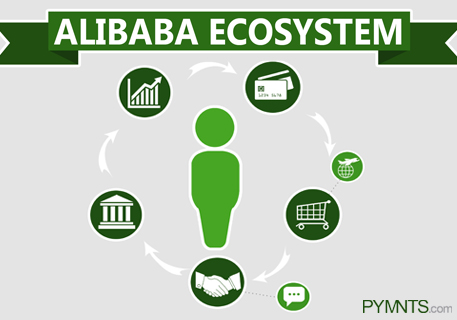Headed For IPO, Alibaba’s Mobile Business Zooms 10x

As Alibaba prepares for a roadshow to convince investors that its $20 billion IPO will be a good deal, the Chinese e-commerce giant has a big advantage: a tenfold jump in mobile commerce in the past year.
Alibaba’s quarterly results for the period ended June 30, published in an update of its IPO prospectus, show overall revenue at $2.5 billion, up 46 percent from a year earlier. That growth accelerated from the 39 percent growth in the March quarter.
But the big jump was in revenue through mobile devices, climbed to about $395 million for the quarter. The number of active mobile users climbed to 188 million, up 25 million from the March quarter.
Much of Alibaba’s revenue comes from its online marketplaces, which match up buyers and sellers, rather than through direct merchandise sales by Alibaba. The company also offers logistics and Internet services to merchants, operates payment processor Alipay, and handles about 44 percent of China’s online B2B transactions. (To see how the company has its corporate fingers in almost every part of the Chinese consumer’s life, see our infographic on the Alibaba ecosystem.)
However, it’s growth in the mobile business — which one portfolio manager quoted by the Wall Street Journal called “spectacular,” and another analyst called “phenomenal” — may be critical for Alibaba going into the IPO. The most similarly-huge recent offering, Facebook’s $16 billion IPO in 2012, quickly stalled and then fell over concerns that the social network wasn’t moving quickly enough to expand to users on mobile devices.
But unlike Facebook, Alibaba is already generating strong mobile revenue ahead of its IPO. Alibaba’s mobile transactions have quadrupled from a year ago to $27 billion, and account for almost one-third of the company’s $81 billion in gross merchandise volume. A year ago, mobile transactions were just 12 percent of the total. Alibaba has also made a series of mobile-related acquisitions, including Chinese mobile-Web browser developer UCWeb.
And while most of Alibaba’s mobile revenue comes from advertising, the company is moving toward tying its Alipay payment app in more closely with its e-commerce operations. Last month the Alipay Wallet mobile app, which previously was focused just on payments, added the ability for Chinese merchants to set up “virtual storefronts” that are accessible through the app. The storefronts would be less elaborate and easier to create than full-fledged online store on Alibaba’s Taobao marketplace. Alipay says it has signed up more than 1,000 merchants for the Wallet app, not all of whom will set up in-app storefronts.
Although those mobile activities boost Alibaba’s mobile business, they give potential investors a new set of worries over spending and profitability. Even though quarterly earnings jumped to $2 billion from $705 million a year earlier, the company’s costs rose 68 percent in the quarter to $740 million.
At the same time, Alibaba’s operating profit margin dropped to 43.4 percent from 50.3 percent a year earlier, which could fuel doubts about how Alibaba’s efforts to grow will affect its bottom line.
How strong those doubts are should become clear during the two-week IPO roadshow, which is expected to kick off this week. The series of meetings with investors in Asia, Europe and the U.S. will be used both to pitch Alibaba and to refine the potential valuation range.
The stock is expected to be listed on the New York Stock Exchange under the ticker symbol “BABA,” and could start trading in mid-September.
